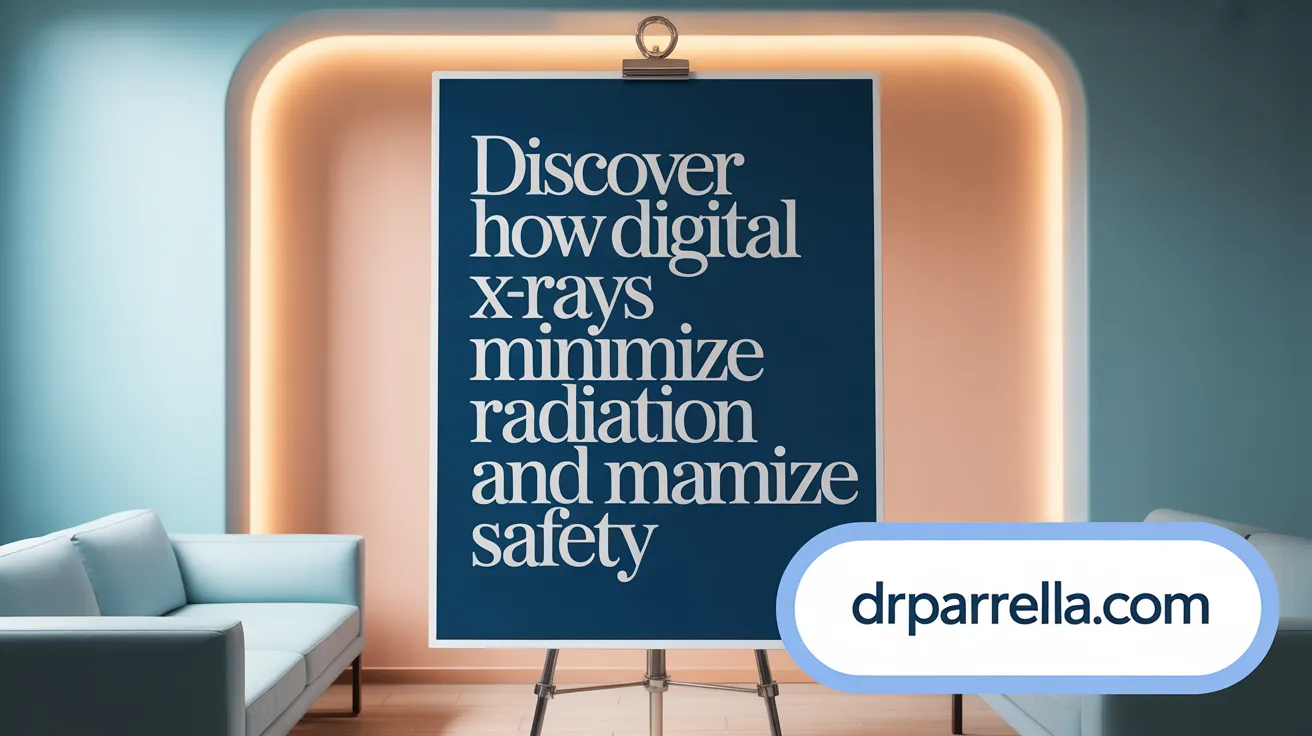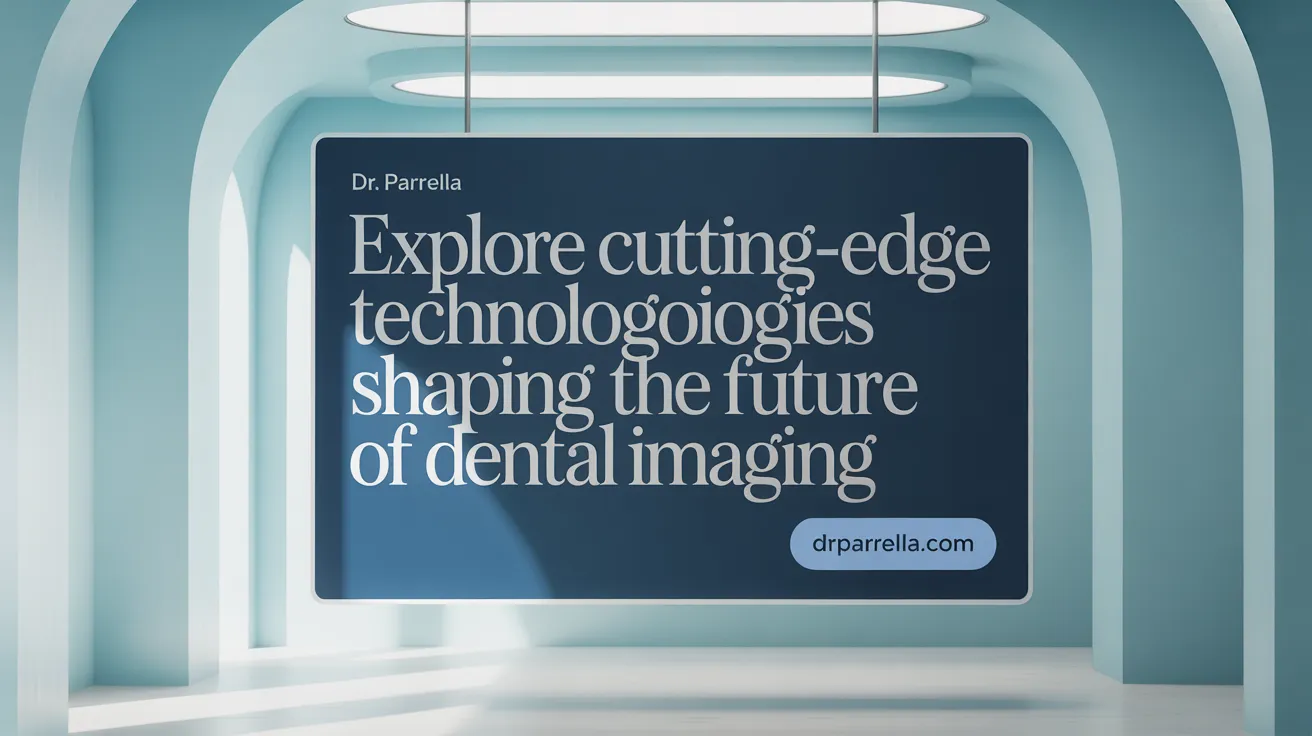Understanding Digital X-Rays: A Leap Forward in Dental Imaging
Dental diagnostics have evolved dramatically with the advent of digital X-ray technology, offering safer, faster, and more precise imaging than traditional film methods. This article explores the science behind digital X-rays in dentistry, highlighting their technological advancements, safety benefits, diagnostic capabilities, and transformative impact on patient care and dental practice workflows.
Historical Evolution and Technological Foundations of Digital Radiography in Dentistry
How did digital X-rays originate and what technologies underpin them?
Dental X-rays trace back to the discovery of X-rays in 1895 by Wilhelm Roentgen. For many decades, conventional film radiography was the primary method for dental imaging.
The revolution began in the mid-1980s, when digital radiography started to replace traditional film systems. The landmark moment was the launch of the first digital radiography system called Radio Visio Graphy (RVG) in 1987 by Dr. Francis Mouyen. This system leveraged CCD (charge-coupled device) image sensor technology, which allowed electronic capture and immediate digital display of radiographic images.
Key Technologies behind Digital Radiography
Modern digital dental imaging employs solid-state sensors such as CCD and CMOS (complementary metal-oxide semiconductor) chips. These sensors convert X-ray energy into electronic signals, which specialized software then processes into detailed images.
In addition to direct sensor technologies, phosphor plates are used for indirect or semi-direct image capture. These plates store the X-ray image information which is later scanned to produce a digital image.
Dynamic Range and Sensor Advantages
One of the greatest technical advantages of digital sensors over traditional film is the dynamic range. Digital detectors offer approximately 400 times the dynamic range of film-screen systems. This means they can differentiate tissue densities much more effectively, resulting in clearer, more detailed images.
The improvement in image quality and rapid accessibility has transformed dental diagnostics by enabling enhanced visualization of small and complex anatomical structures with less radiation exposure.
Enhanced Diagnostic Capabilities and Image Manipulation

What diagnostic advantages do digital X-rays provide?
Digital X-rays deliver exceptionally high-resolution dental images, enabling dentists to see intricate details of dental anatomy that traditional X-rays might miss. This includes clear views of the periodontal ligament space, lamina dura, and the patterns of bony trabeculation, which are vital for diagnosing periodontal disease and subtle bone changes.
Beyond just capturing images, digital tools allow post-acquisition image manipulation such as enhancing contrast, reducing blur, and filtering noise. These adjustments help to highlight carious lesions, early-stage periodontal damage, and other structural abnormalities that could be overlooked.
An important advancement, digital subtraction radiography, compares images taken at different times to detect minute changes in tooth decay or bone loss progression. This quantitative monitoring aids in timely treatment decisions.
Furthermore, three-dimensional reconstruction technologies, particularly Cone Beam Computed Tomography (CBCT), offer detailed spatial views of teeth, jaws, and surrounding tissues. This 3D imaging supports precise surgical planning, implant placement, and assessment of complex dental conditions.
These enhanced diagnostic capabilities have revolutionized dental care by improving accuracy, enabling earlier detection, and facilitating better treatment outcomes.
Safety and Radiation Dose Reduction in Digital Dental X-rays

How does digital radiography improve patient safety regarding radiation exposure?
Digital dental X-rays have transformed dental imaging by significantly reducing radiation exposure, often by 80 to 90% compared to traditional film-based X-rays. This substantial decrease in ionizing radiation enhances patient safety by minimizing the risks commonly associated with X-ray examinations (Dental X-rays overview, Benefits of Digital Dental X-Rays).
Modern digital systems emit radiation doses comparable to just a few days of natural background radiation—levels considered extremely low by regulatory standards (Radiation in Dental X-rays, Safety of modern dental X-rays). As a result, leading organizations like the American Dental Association have updated their guidelines, stating that routine use of lead aprons and thyroid collars during dental X-rays is generally unnecessary (ADA updated radiography safety recommendations). While these protective devices offer psychological comfort to some patients, especially pregnant women and children, they do not effectively block the minimal internal scatter radiation and can sometimes interfere with image clarity (Radiation exposure concerns in dentistry.
Environmental benefits also arise from digital radiography, which eliminates the need for chemical film processing. Traditional X-ray films require hazardous chemicals that contribute to pollution, whereas digital imaging reduces chemical waste, making it a more eco-friendly choice (Environmental Benefits of Digital Dental X-Rays, Environmental benefits of digital X-rays).
Overall, digital dental X-rays provide a safer, more efficient approach by combining significantly lower radiation dose, adherence to strict safety protocols, and a reduced environmental footprint (Digital Radiology Advantages, Advantages of Digital Radiography, Digital X-Ray Technology).
Workflow Efficiency and Patient Experience Improvements with Digital X-rays

Instant image capture and review
Digital X-ray technology uses electronic sensors to capture images instantly, displaying them on computer monitors within seconds. This immediate availability accelerates diagnosis and treatment planning, allowing dental professionals to provide real-time feedback during appointments. Patients benefit from shorter chair times and quicker consultations (Digital X-rays, How digital X-rays work, Immediate image viewing.
Electronic storage and sharing
Digital images are stored electronically, enabling indefinite secure storage without physical space requirements. This facilitates easy access for dentists and supports seamless sharing among healthcare providers or insurance companies, improving collaboration and streamlining insurance claims processing (Electronic storage of X-ray images, Sharing digital X-Ray images, Digital image sharing).
Patient comfort and operational speed
Modern digital sensors are designed smaller and more flexible, enhancing patient comfort during imaging. The faster imaging process reduces overall appointment durations, improving patient experience while maintaining high-quality diagnostic images. Protective barriers ensure proper infection control without compromising efficiency (Digital dental X-rays patient comfort, Infection control in digital radiography, Radiation safety in dental imaging).
Economic considerations
While digital radiography systems have higher upfront costs compared to traditional film, long-term savings are realized by eliminating expenses for film, chemical processing, and physical storage. The efficiency gained through quicker diagnoses and enhanced patient flow contributes to better operational productivity and potentially increased practice revenue (Cost of digital X-ray systems, Efficiency in dental practices, Return on investment digital X-rays).
Advanced Applications and Future Directions in Digital Dental Imaging

What are current advanced applications and future trends in digital dental radiography?
Digital dental imaging has evolved far beyond traditional X-ray applications, integrating advanced technologies that significantly enhance diagnostic and treatment capabilities.
In forensic dentistry, digital radiography plays a crucial role in age estimation, suspect identification, and the examination of postmortem and injury cases, providing critical evidence through detailed imaging.
Three-dimensional imaging, particularly Cone Beam Computed Tomography (CBCT), has become essential in dental care. CBCT offers high-resolution 3D views of teeth, jaws, and surrounding bone structures, enabling precise surgical planning, implant placement, trauma assessment, and tumor evaluation. This technology delivers detailed spatial information impossible to capture with 2D images.
To ensure seamless integration and sharing of digital images across various devices and healthcare providers, digital dental imaging systems comply with DICOM (Digital Imaging and Communications in Medicine) standards. These standards guarantee interoperability and streamline collaboration among dental professionals.
Looking ahead, artificial intelligence (AI) integration is an emerging frontier in digital dental imaging. AI algorithms assist clinicians by detecting early signs of dental anomalies, such as cavities or periodontal disease, enhancing accuracy and enabling personalized treatment plans. AI also supports predictive analytics, improving preventive care and patient outcomes.
Together, these advancements in digital radiography not only improve diagnostic precision but also transform dental care delivery by fostering enhanced collaboration, efficiency, and patient safety.
The Impact and Promise of Digital X-Rays in Modern Dentistry
Digital X-rays have revolutionized dental diagnostics by providing safer, faster, and more precise imaging. They significantly reduce radiation exposure while enhancing the clarity and detail of dental images. The instantaneous availability and manipulability of digital images improve diagnostic accuracy, patient communication, and clinical efficiency. Beyond routine care, advanced applications like 3D CBCT imaging and forensic usage emphasize the broad utility of digital radiography. As technology continues to evolve with AI integration and improved sensor designs, digital X-rays stand at the forefront of modern dental care, promising even greater innovations to enhance patient safety, diagnosis, and treatment outcomes.
